
This Month in Nintendo History: September 1988
Shane Jury :: September 5th 2011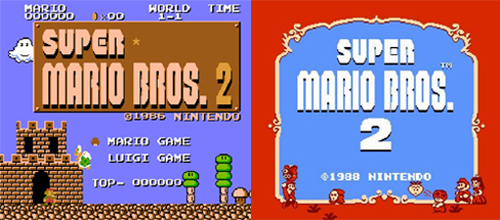
Just quickly, a little background info. As every man, woman, child and their cat knows, the first Super Mario Bros. was a roaring success upon its initial release in 1985, moving countless units and Nintendo machines, and helping to get the gaming industry back on its feet after Atari did their very best to muck it up. Naturally, there had to be a sequel, as Nintendo had gotten a taste of the big bucks and wanted a few more, so Super Mario Bros. 2 was commissioned, completed, and released in Japan.
Fairly pedestrian thus far you may think, but this is where things get interesting...
This, humble readers and browsers, is Yume Kōjō: Doki Doki Panic or, in non-squiggly writing, Dream Factory: Heart-Pounding Panic, a Japan-only game made to tie in with a certain television event. The story goes that broadcaster Fuji-TV used the game as promotion material for a 1987 Yume Kōjō event that highlighted the network's newest programmes. The mascots of this event were the four primary characters of the game, with a story wedged in for good measure. A green hand reaches out of a book that two kids are reading and drags them inside, so another little guy named Imajin and the rest of his family dive in as well to save the kids from Mamu (or Wart, as we now know him).
Originally the game was made for the Famicom Disk system, an add-on that offered games and developers using its disks more space and less expense. Despite this, most overseas releases like The Legend of Zelda and Metroid were retrofitted into regular NES cartridges due to the Disk System's unavailability elsewhere.
Now, when it came to Super Mario Bros. 2 on shores outside of Nippon, Nintendo decided that releasing it wouldn’t be a wise move for two reasons. A, because the game did not vastly differentiate from the original and thus less informed potential buyers might not see it as a proper sequel; B, it was too dang hard for all us youngsters, and Nintendo didn’t want to start issuing NES pad wrist straps and jackets if things got a bit hairy. So, owing to the fact that Doki Doki Panic wouldn’t have set foot on western soil in its present form, The House That Mario Built took it and gave it a spruce-up, albeit a very minor one.
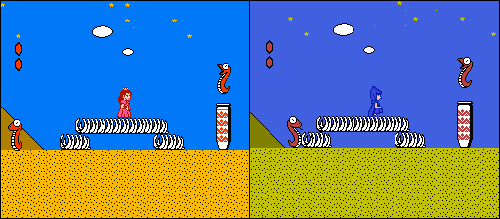
Releasing as Super Mario Bros. 2 in the states, this altered version of Doki Doki Panic replaced all the main characters with Mario and his crew, and altered the plot to explain why they were suddenly running around an Arabian world with dive-bombing faces and the gender-confused Birdo coughing eggs at them. It also marked a number of firsts for the franchise - it's one of the rare times Mario isn’t adventuring to save the Princess, as she’s right there from the beginning. Jumping on enemies’ heads no longer killed them either; you had to land on them, pick them up and throw them, or grab something else and chuck in at them. The life bar was also introduced here too, it now being a regular occurrence in 3D Mario games exclusively. Foes like Shy Guys became well-known through the franchise in later years, and the special abilities of certain characters carried over to future games too; Luigi’s floaty high jump and Princess Peach’s mid-air glide specifically.
This version of the game proved far more popular than the original Doki Doki Panic, and was thus released as Super Mario USA in Nintendo’s homeland not long after. Gamers in the USA and beyond eventually saw the original Super Mario Bros. 2 remade as part of the Super Mario All-Stars collection on Super Nintendo, proving that it was indeed more difficult to beat than Reggie in an ass-kicking contest. But for those wanting the game in its original form, Nintendo’s handheld forerunner and its fifth home console both answered prayers.
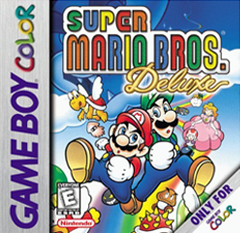
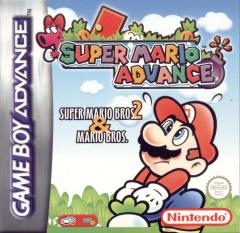
1999's Super Mario Bros. Deluxe was, in essence, a port of the original NES game to Game Boy, with extras like a challenge mode, simultaneous multiplayer, and an overworld level map, all retained in the original visual style. A little-known extra of the game, however, was that eight extra worlds were included on top; all of which were from the Japanese Super Mario Bros. 2, making the final product a two-for-one bargain package.
As part of a special Hanabi Festival Nintendo ran on Wii Virtual Console service every year or so, games would be put up for download in territories where they had never been originally released. For 2007’s festival, Super Mario Bros. 2 made the cut. Oddly enough - though not too odd when you consider Nintendo's limited time demo antics - Nintendo of Europe took the game down shortly after without reasoning, only reinstated the game not long after that. Strange, huh?
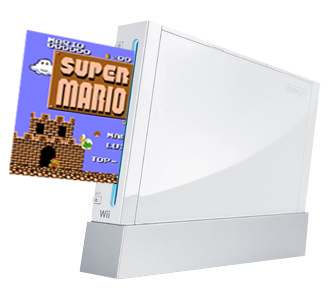
The Doki Doki conversion has had more exposure in recent years as well. It was also added to the Wii’s Virtual Console line up, and presented itself as the Mario game of choice for the Game Boy Advance launch in 2001 in the form of Super Mario Advance. This version had voice acting, a score system, and Yoshi’s Challenge; a mode that hid eggs throughout the levels for you to find. In part due to its curious oddity and the brand legacy, Mario Advance became one of the system’s best sellers, making its way into the Player’s Choice budget range in later years.

 Sign In
Sign In 05.09.2011
05.09.2011  jesusraz
jesusraz 
 Link to this post:
Link to this post: 
 Subscribe to this topic
Subscribe to this topic Features
Features






 Top
Top

